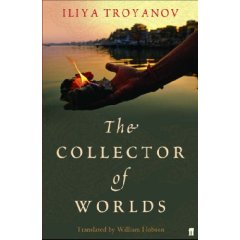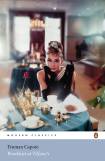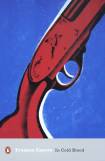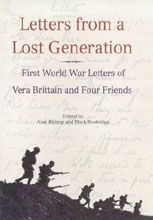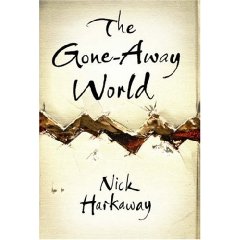
I was sent a proof copy of this book to review several weeks back, prior to its general release. When I was contacted I received a couple of paragraphs to whet my appetite. Without knowing what to expect, or what kind of book it was going to be, I allowed myself to be sold by the paragraphs – there was something within the intelligent turns of phrase that made me want to read more. The book arrived and I read…and I am still reeling from the experience. The Gone Away World is an incredible work of imaginative fiction which, once I had read the last page, I was sorely tempted to turn back to the front and start all over again.
The Story
The story is set on earth, but it is an earth which has been all but destroyed by a war which has essentially destroyed everything short of a narrow band of the ‘livable zone’, maintained thanks to the looming presence of the Jorgmund Pipe. I was confused by the first chapter, as the book launches at a time when the war has been over for a while, our narrator and his friends are almost renegade heros, and they have been called to save the world (again) as it seems the life giving, or more accurately, the normality giving Pipe is on fire. Chapter 2 jumps back to the childhood of our narrator and his best friend, Gonzo Lubitsch, in a fashion I found slightly jarring. I had so many unanswered questions from the first chapter, that the embarkation on the growing up and coming of age story confused me. However, as the book progresses, and the boys grow up, go to university and eventually join the army, it becomes to come clear. The war that was mentioned in the first chapter becomes a reality, and the whole reason for the earth’s destruction becomes clear.
Because of Harkaway’s chosen genre, the book blends familiar reality with unfamiliar absurdity. As time goes on, the absurdity becomes the norm but in a way which almost seems real. We never know the name of our narrator because he appears not to have a name. I only began to wonder about that when the story finally caught up with the first chapter, by which time I was so hooked I couldn’t put it down. Before long, a revelation occurs which turns the life of our narrator and Gonzo upside down, if indeed that were possible after all they had been through. But Harkaway is incredibly adept at drawing the threads of the story together, of confusing the reader only to have them exclaim “of course!!” when it becomes clear, and of painting it all with a vivid brush of imagery both banal and amazing.
You come across ninjas, mimes, circus performers, executives, martial arts masters and your darkest nightmares, but you take such absurdity in your stride. Because ultimately the world has irreversibly changed in the war, making the unbelievable completely expected. It is a strange but wonderful world he has created – one I didn’t want to leave.
Style
In my opinion, the book falls within the realms of speculative fiction. Science fiction is too old fashioned and inaccurate a term for it. Perhaps I am still old school and think of Isaac Asimov whenever I hear of science fiction, but The Gone Away World was a completely new experience. This is Nick Harkaway’s first novel, and it demonstrates his ability with words and imagery. He writes with a wry humour that only lightly masks the depth of his themes. He clearly loves language and metaphor. He weaves single word exclamations in with multi paragraph descriptions of Tupperware containers to provide a pace that generally avoids getting bogged down. If I were to make a criticism, it would be that perhaps he was a little too wordy. Particularly at the beginning, where I was suffering from confusion as well, I found some of the lengthy descriptions a bit tedious. Yet, I felt it improved as the book progressed. It is a long book and perhaps reducing some of this wordiness could make the book a little more accessible, however I would not wish to be the editor and sacrifice some of Harkaway’s wonderful turns of phrase.
Themes
The theme that struck me most was that of the nature of war. Harkaway’s war is not like other wars. Rather than destruction, the bombs that are dropped in this war obliterate everything. They are Go Away bombs – bombs which remove all of the information from matter and energy leaving absolutely nothing. If you are in the path of a bomb you literally disappear, along with everything else in the bomb’s radius. This kind of weaponry makes the atom bomb look archaic. But the annihilation is total – and once the world has Gone Away, then by virtue of nature, something must take its place. And it is this something which the executives and corporate machine which is left over after the war tries to control and curb. But it is this something which is as much a result of human action as the war itself, and it cannot be controlled.
I loved the comment on the violence and destructive tendencies of human nature, and the fear and distrust of change, even if that change is perpetrated by humans in the first place. Yet amongst that, there are still heroes. People still fall in love, they still form lasting friendships, and they still stand up for the underdogs or the misunderstood. Thus, this is a heroic fairy tale – it has all of the ingredients. But it is a fairy tale which is so relevant to modern society with our ever more powerful weapons and our ever more futile and childish political squabbles. It is a fairy tale which delivers a message of caution, alongside a message of hope as voiced by the narrator, whose life seems to fall right in the centre of it all.
Conclusion
I absolutely loved this book and it has driven me to broaden my horizons when it comes to genre. I would comfortably read more speculative fiction and I will be looking forward to more by this author. Although The Gone Away World may not have the read-on-the-train appeal of some of the trashy fiction which you can get today, for any intelligent reader who has an imagination and a sense of humour, you simply can not go wrong.
Rating: 10/10
ISBN: 9780434018420
Publisher: William Heinemann (Proof Copy)
Date: 2008
Date Finished: 4 June 2008
Pages: 532
Challenges:

